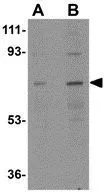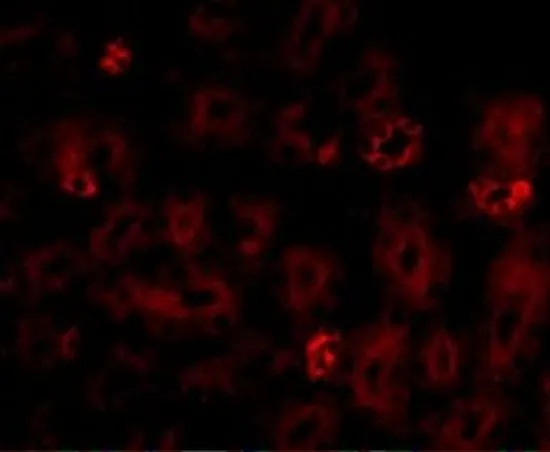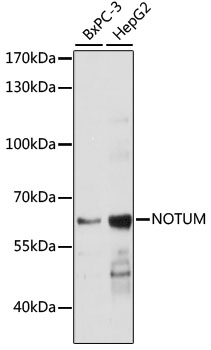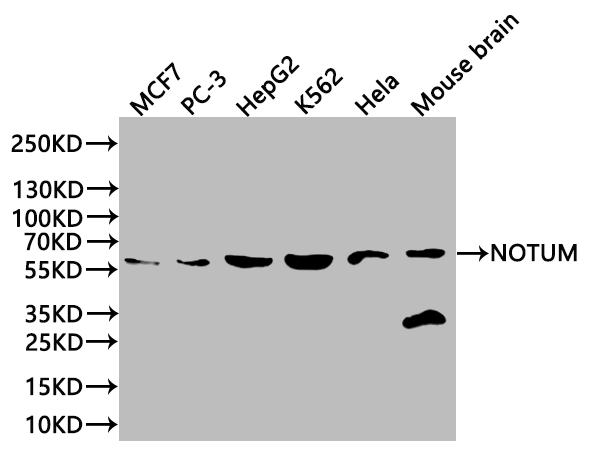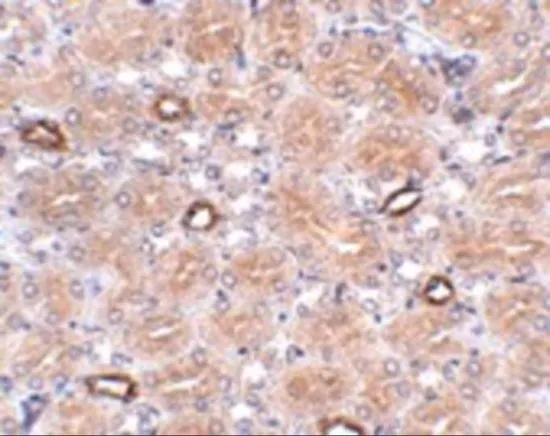
IHC-P analysis of human brain tissue using GTX85260 NOTUM antibody. Working concentration : 2.5 microg/ml
NOTUM antibody
GTX85260
ApplicationsWestern Blot, ELISA, ImmunoHistoChemistry, ImmunoHistoChemistry Paraffin
Product group Antibodies
TargetNOTUM
Overview
- SupplierGeneTex
- Product NameNOTUM antibody
- Delivery Days Customer9
- Application Supplier NoteWB: 0.5 - 1 microg/mL. IHC-P: 2.5 microg/mL. *Optimal dilutions/concentrations should be determined by the researcher.Not tested in other applications.
- ApplicationsWestern Blot, ELISA, ImmunoHistoChemistry, ImmunoHistoChemistry Paraffin
- CertificationResearch Use Only
- ClonalityPolyclonal
- Concentration1 mg/ml
- ConjugateUnconjugated
- Gene ID147111
- Target nameNOTUM
- Target descriptionnotum, palmitoleoyl-protein carboxylesterase
- Target synonymshNOTUM, palmitoleoyl-protein carboxylesterase NOTUM, [Wnt protein] O-palmitoleoyl-L-serine hydrolase, notum pectinacetylesterase homolog, protein notum homolog
- HostRabbit
- IsotypeIgG
- Protein IDQ6P988
- Protein NamePalmitoleoyl-protein carboxylesterase NOTUM
- Scientific DescriptionIn Drosophila, the notum gene is regulated by the Wingless pathway and encodes a secreted hydrolase that modifies heparan sulfate proteoglycans. The mammalian homolog has been shown to be able to cleave glypicans and can release GPI-anchored proteins from the mammalian cell surface. Like the Drosophilia NOTUM, the mammalian protein can act as a negative regulator of the Wnt signaling pathway. NOTUM is expressed at a low level in most mammalian tissues, although it is overexpressed in a subset of human hepatocellular carcinomas. Its transcription is regulated by b-catenin/TCF and is a target of the Wnt signaling pathway, forming a negative feedback loop that regulates the expression and activity of the Wnt pathway.
- Storage Instruction-20°C or -80°C,2°C to 8°C
- UNSPSC12352203

